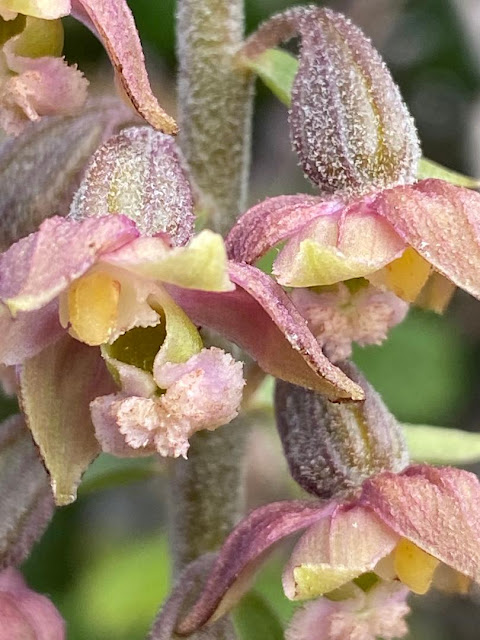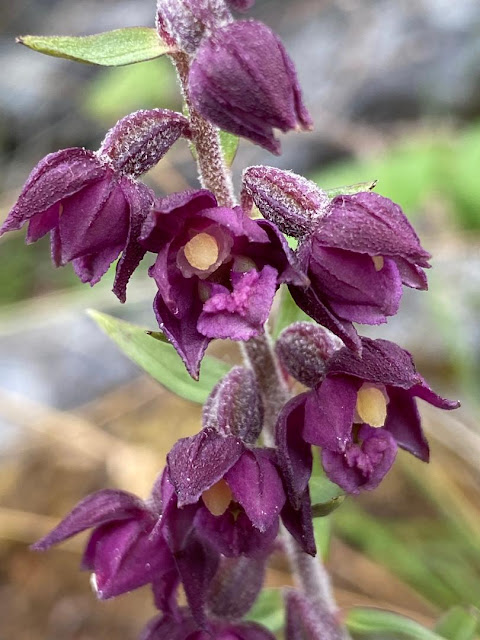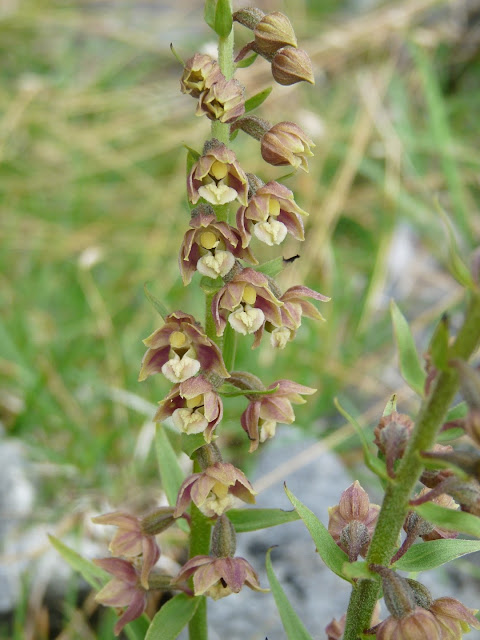January 8th 2022
I have today spent my time sorting out this years photos showing the many varieties of E. Atrorubens which we do have on Hutton Roof, Cumbria.
January 3rd 2022
This is a beauty and one I have given the local nickname "Wheat". We have three "wheats" almost replicated and spread out over my research area. They are probably 200 yards apart from one another and so unusual in the fine colours they show. You may note that with this variety the yellow (or base colour) is not just seen in the shorter petal but it has also made impact on the sepal as well. Also you will find that the sepal does not have that dark purple or red but more of a light red to brown colour. Very attractive bicolored specimen. NOT thought to display any features of hybridization as yet! although I must say it does have some very light green features. To have the contrasting light green, strong yellow and light brown really shows the plant off in a special sort of way.
January 2nd 2022
On the 26th July 2021 I did find a strange looking helleborine which did have some replicated features.
30th December 2021
30th December 2021
We have 6 specimens on my small research plot that have white/cream epichiles and bosses. What do you think the reason behind those specimens standing out in the way they do? Well one thing is for sure they are all bicolors to a degree! and they are all thought to be hybrids. NOW THEN we could go further and say well what about the 11 PALLENS which we are lucky enough to have in our small field they too all have white/creamed or white/creamed and red speckled epichiles and bosses. For obvious reasons I can rule out Bicolor, but you know it has on occasions entered my mind if they too have some hybrid connection (but not for today!). Enjoy for now our CREAM/WHITE EPICHILES and remind me to tell you about a plant that once had a white epichile which today that same plant has a cherry red epichile and boss! (a story for another day perhaps!)
30th December 2021
You might be interested to see the whole of the Specimen 15 family. They consist of parent 15a, 15b, and 15c which are a triplet group and do have protection by wire cage. Then if you go about 10 yards to the South you find 15d and 15e. If we then go back to the main parents and look about 2 yards to the NW of the family group you see the most beautiful 15h which is well hidden with a closeby juniper separating it from the parent. Here are some photos showing the whole family so far recognised or perhaps I should say diagnosed. They are all hybrids of E.atrorubens x E. helleborine. There are still a couple within this diameter field which I am still considerating. It is really good because the builds are so similar in every respect, bunch around the stem, same flower profile, same leaf and same leaf behaviour. Only minor differences! If you were to see this plant anywhere else you would instantly knew where it belonged. A fabulous family I have seen grow from a 2 plant to a 6 plant family. I always used to nickname these has my "Hyancinths"
15d (1st offspring) 2019
15d and 15e (1st offspring) 2021
Parents mums or dads 2014
parent 2015
1st offsprings again 2021
15h 2nd offspring
15h 2nd offspring







































































































































